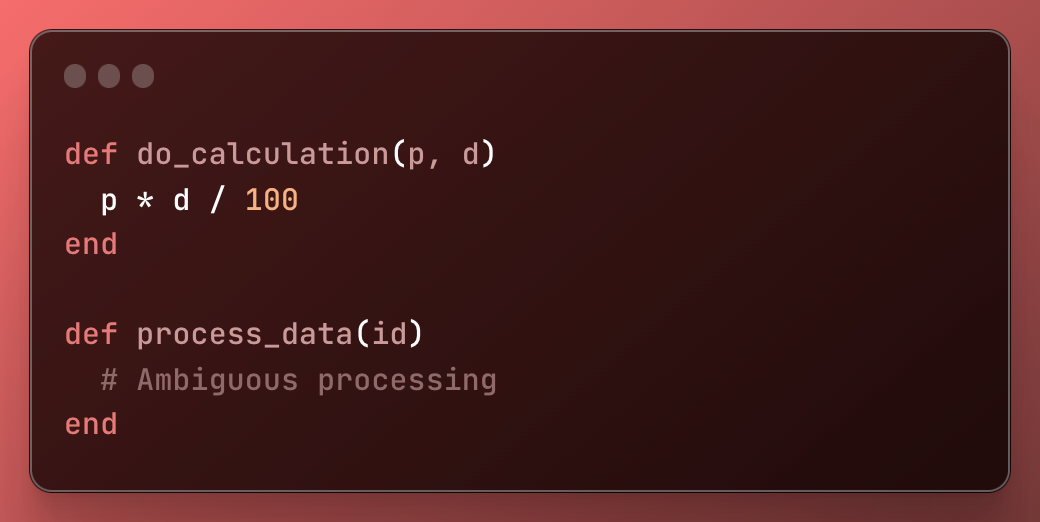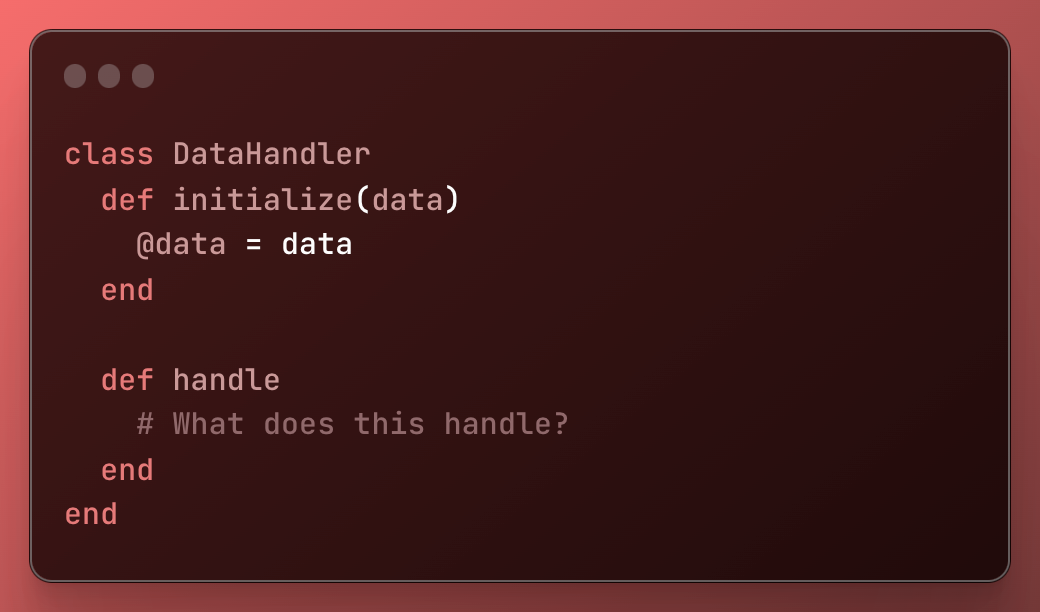Meaningful Names in Ruby Code
A Guide to Better Ruby Variable, Class, and Method Names
In the realm of software development, the significance of naming cannot be overstated. This is especially true in Ruby, a language celebrated for its elegance and expressiveness. Ruby developers have the unique opportunity to write code that not only performs well but also reads like a well-crafted narrative. This article explores the importance of meaningful names in Ruby code, illustrating best practices with examples and counterexamples to guide developers towards crafting more intuitive and maintainable codebases.
In the realm of software development, the significance of naming cannot be overstated. This is especially true in Ruby, a language celebrated for its elegance and expressiveness. Ruby developers have the unique opportunity to write code that not only performs well but also reads like a well-crafted narrative. This article explores the importance of meaningful names in Ruby code, illustrating best practices with examples and counterexamples to guide developers towards crafting more intuitive and maintainable codebases.
The Importance of Meaningful Names
Choosing meaningful names is a critical step in writing clean, understandable code. In Ruby, where the philosophy of “optimizing for developer happiness” is a guiding principle, the clarity of code is paramount. Meaningful names serve several essential purposes:
Clarity: They make it immediately clear what a variable holds, what a method does, and the purpose of a class.
Maintainability: Code is read more often than it is written. Clear, descriptive names make the code easier to revisit and modify.
Communication: In team settings, using meaningful names helps ensure that all members can easily understand and discuss the code, facilitating better collaboration.
Examples of Meaningful Names in Ruby
Let’s delve into some specific examples to demonstrate how meaningful names can be applied in Ruby code.
Variables
Good Example: Use names that describe the variable’s content or purpose.

Bad Example: Vague and non-descriptive names.

Methods
Good Example: Method names should clearly indicate what they do.

Bad Example: Ambiguous method names.

Classes
Good Example: Class names should reflect their responsibility within the application.

Bad Example: Overly generic or unclear class names.

Counterexamples and Their Solutions
Non-Descriptive Names:

Abbreviations and Acronyms:

Generic Terms:

Best Practices for Meaningful Names in Ruby
Consistency: Stick to a consistent naming convention throughout your Ruby codebase. Rubyists often favor snake_case for variable and method names, and PascalCase for classes and modules.
Precision: Choose names that precisely convey the purpose or content of the variable, method, or class. Avoid generic or vague terms.
Domain-Specific Language: Use terminology relevant to the business or application domain. This enhances readability for team members familiar with the domain.
Adaptability: Be willing to refactor names as the code evolves. If a method’s behavior changes, its name should reflect this change.
Conclusion
In Ruby development, where expressiveness and readability are highly valued, the importance of meaningful names cannot be overstated. By adhering to the principles outlined in this guide, developers can ensure their code is not just functional, but clear, maintainable, and enjoyable to work with. Remember, the names you choose are an integral part of your code’s narrative — make them count.
